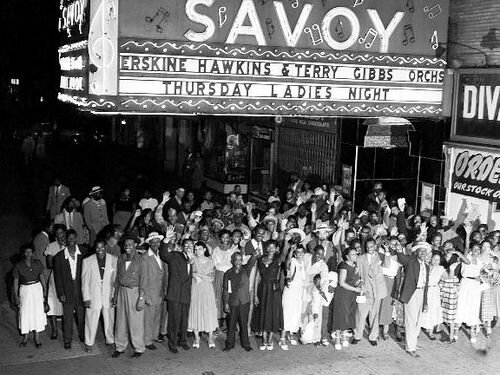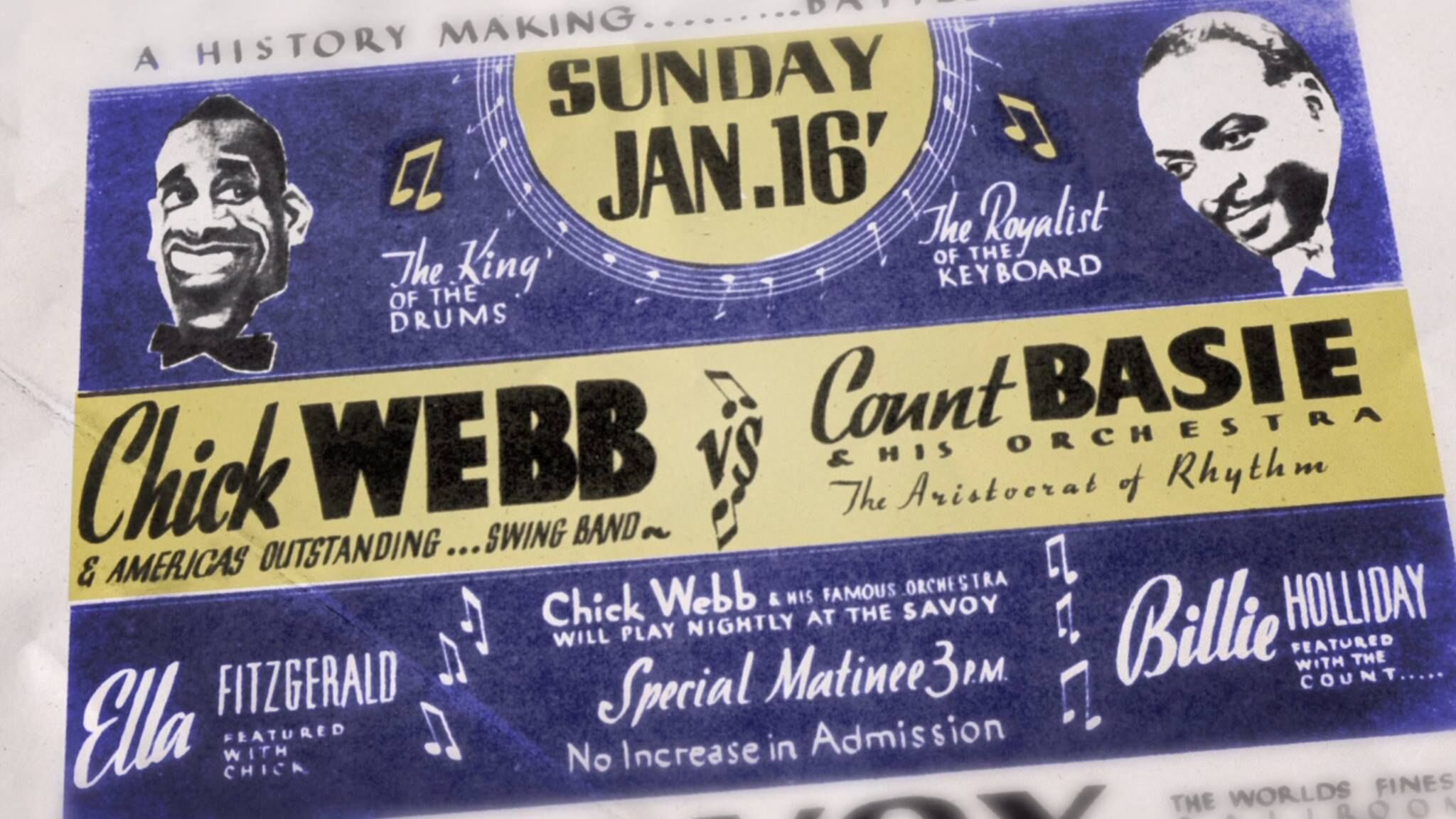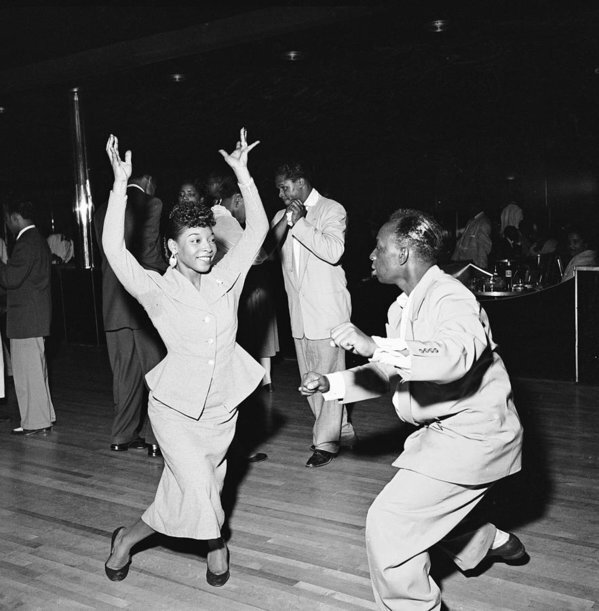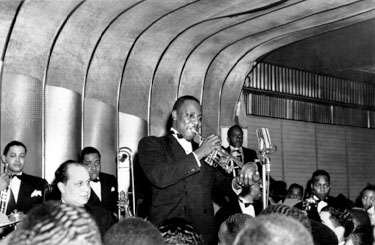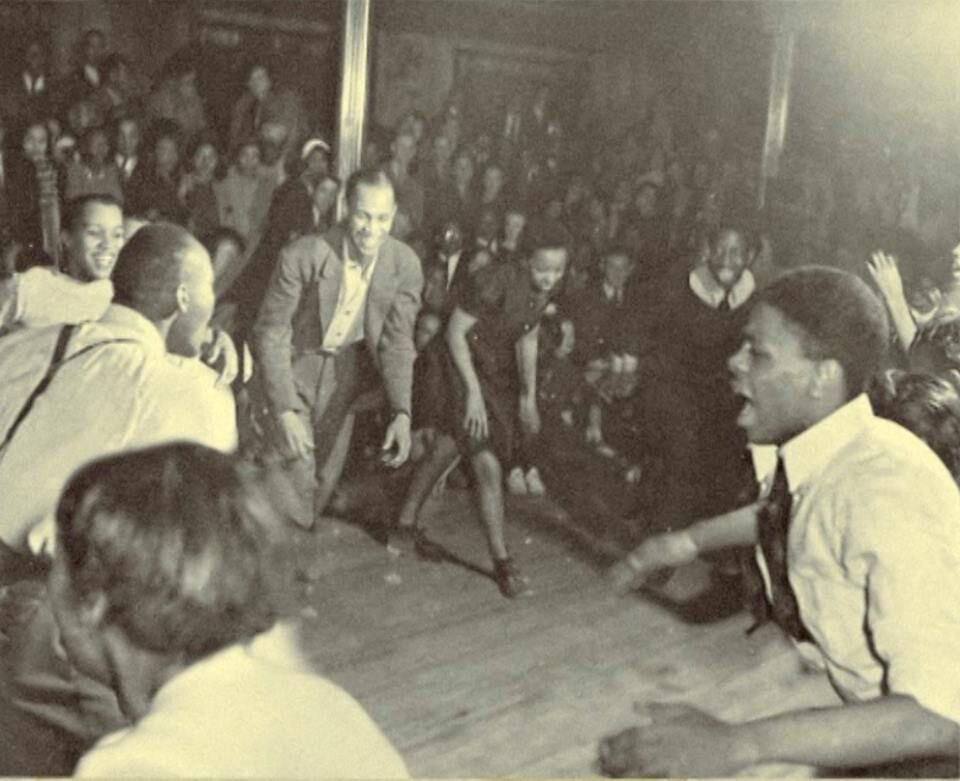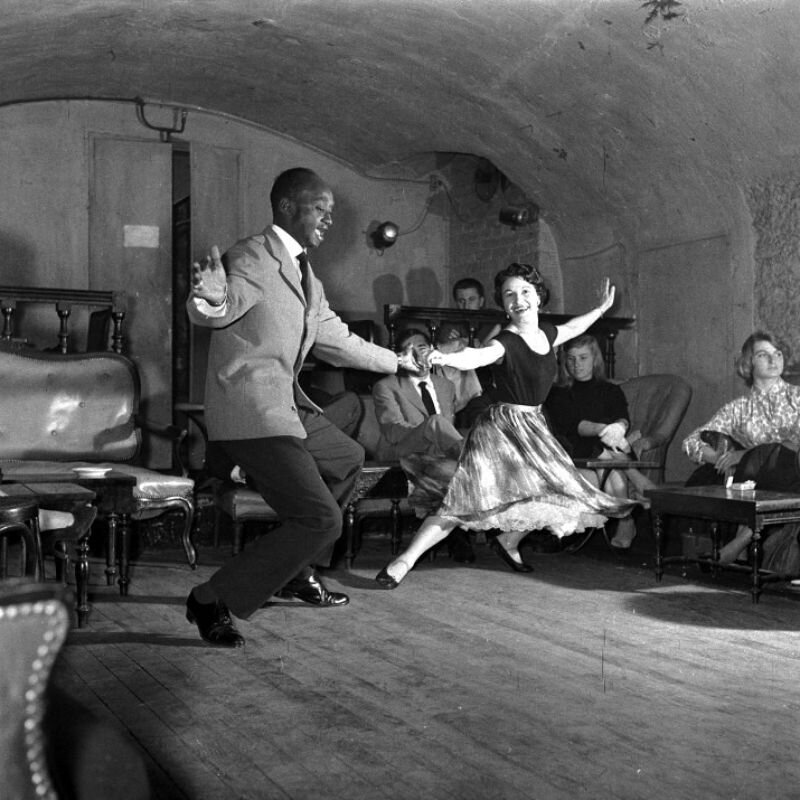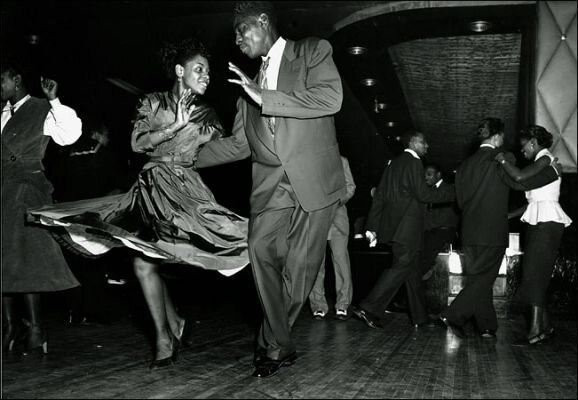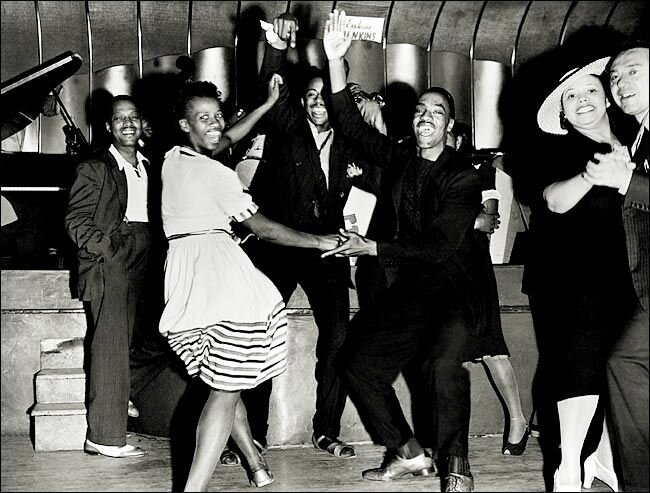Origins of Swing Dancing
Below is a very brief explanation outlining of the origins of Swing Dancing.
Swing Dancing originated in Harlem, New York City in the late 1920s. It continued its popularity through to the late 1940s. The Swing Dance style that was widely danced was called Lindy Hop. The rhythms in Lindy Hop match the Jazz music swing beat. So you might say the two go hand in hand. The Savoy Ballroom in Harlem was a haven for Black Americans to dance Lindy Hop and connect with the brilliant original Jazz musicians. Chick Webb, Ella Fitzgerald, just to name a few, all played at the Savoy Ballroom. The Savoy Ballroom was famous for its ‘Battle of the Bands’ where two Jazz bands would face off against each other in the ultimate Jazz music showdown. A dance troupe called Whitey's Lindy Hoppers performed swing dance around the world and featured dancers such as Frankie Manning, Norma Miller, Willa Mae Ricker, Al Minns, Leon James- just to name a few!
The Savoy Ballroom
Harlem, New York City
As music styles changed, so did the ‘popular’ dance that matched, for example, rock n roll jive in the 1950s and disco in the 1970s. Swing dancing was ever-present throughout these times in Black communities. Many variations of swing partnered dances existed. General published knowledge about these variations of the partnered dances in the Lindy Hop research material is scarce, as the history is recorded from what is valued from a white perspective. It was filtered out as it wasn’t deemed ‘important’ for the white mainstream culture. However, Lindy Hop and variations of swing partnered dance were always strong and ever-present in Black communities and culture, passed down through the generations.
We acknowledge there is way more research to be done into the swing dancing narrative as told from Black perspectives and not the White revival of swing dance. The clip below is from Hellzapoppin’. It is an amazing example of swing dancing that exists on film, but look at how the black dancers are dressed- as servants, cooks, maids, servicemen. Portraying black people belonging to a different ‘class’ to white people. The clip is also detached from the film storyline so it could be taken out when played to audiences in the South. This is typical of segregation in films of the time and popular Black dance clips we view today.
Nostalgia for all aspects of vintage- ‘the good ol’ days’ should also be viewed critically as it plays directly into constructing the white narrative of swing dancing. Nostalgia started in the 1970s for white communities as they uncovered old jazz records and dance clips. When white audiences found Leon James, Al Minns and later Frankie Manning in the 1980s the white dance craze for the 1930/1940s era started. White communities put on their ‘rose coloured glasses’ and were enthusiastic and excited about Lindy Hop. Here is where the disconnect started to form with the dance knowledge. The new white learners were demanding a ‘structure’ ‘format’ to the dance e.g counts, steps etc from the old-time black dancers. Frankie and Norma were offering the black perspective for experiencing and learning Lindy Hop where ‘feeling’ the music is central to the dance and unfortunately, this didn’t make sense to white audiences.
Despite this enthusiasm and excitement of the new white dancers, the spread of ‘teaching’ Lindy Hop from a white perspective expanded globally with the establishment of swing dance camps. Essentially, this started the loss of the true cultural black essence of Swing Dancing.
Then came the white profit marketing wagon in the 1990s, Swing Kids movie, Blast from the Past, The Gap Commercial, that elevated Swing Dancing even more into a nostalgic white space. This created the false narrative of Swing dancing as an All American, nostalgic, wholesome, white dance.
*Credits: Facts and references summarised from an interview by Grey Armstrong / Jo Hoffberg 2022. Scroll down the page for the full interview.
White bias exists in the instruction of Swing Dancing to this day. Global dance scenes have work to do in breaking down the ‘white narrative’ and honouring/rebuilding the true black origins of Swing Dancing. This involves white dancers stepping into an ‘uncomfortable’ space to enact real change.
We are guests in Black culture.
Ask questions, be curious, listen without a response, and don’t readily accept the ‘Lindy Hop Story’ told to you by a white person.
“I’m not interested in fame and glory. It’s just that I would like others to know what a happy dance this is.
”
Swing Dancing began in Black communities. We continue to honour this by celebrating and spreading the joy Lindy Hop brings to people who dance it. Today, it is a dance style that keeps on developing with our global swing dance community. Social Media tools spread the message and ease of global travel connects dancers like never before. While we look towards the future, we are reminded to always respect the past, listen with empathy, to remain educated and mindful of the injustices black people suffered and are still suffering today, especially in the current Swing Dance Community.
Memories of the Savoy Ballroom
Harlem, New York City
Learn More
Education is a key part of developing understanding and context around Swing Dancing.
Below are resources to help guide thinking and korero around this emerging conversation. Set aside an hour to watch each one.
The Growing Global Conversation
PhD dissertation, Thriving in Crisis: The Chick Webb Orchestra and the Great Depression by Christi Jay Wells. This talk provides researched content around one of the great bands of the Savoy Ballroom and the role the great depression played during the Swing Dance era.
ILINDY featuring Grey Armstrong and Jo Hoffberg which is discussing Lindy Hop and Blackness.
Swim Out Costa Brava 2022 - Jazz Culture Talk with Remy Kouakou Kouame & Helena Martins discussing Swing Dancing and cultural appreciation.
FROM YOUTUBE
Credits
We are so lucky to have Christi Jay Wells speak on this subject. Their PhD dissertation on Chick Webb won a major award: The Wiley Housewright Dissertation.
FROM YOUTUBE:
Credits
In this interview with Grey Armstrong we will get into part 2 of his blog series on iLindy.com, Let's dig in on how Lindy Hop turned into a community where Black dancers and Black culture aren't welcome. It's important to understand this history to build a more inclusive and respectful community moving forward.

